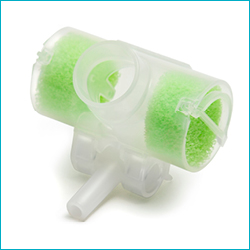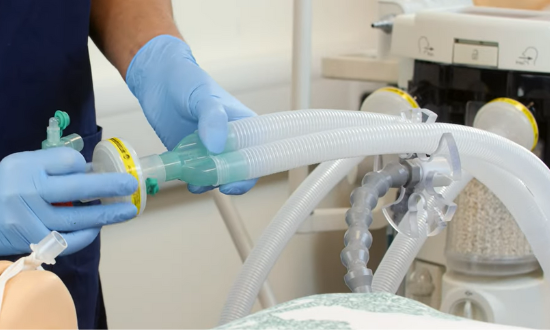In normal respiration the anatomy of the upper airway helps to warm and humidify inspired air, and to retain the warmth and moisture contained in expired air. During inspiration, even cold or dry air is typically heated to 37°C and when fully saturated, contains 44mg H2O/L. In normal respiration, the anatomy of the upper airway helps to warm and humidify inspired gas, and to retain the warmth and moisture contained in expired air. When you inhale, even cold or dry gas is heated to body temperature and by the time it reaches your lungs, it contains the correct amount of moisture. In mechanical ventilation or anaesthesia, the patient’s upper airway may be bypassed by the introduction of a tracheal tube. As a result the patient’s lungs may be confronted with cold, dry inspired gas.
Prolonged exposure to dry ventilatory gases can lead to:
• Localised inflammation of the trachea
• A reduction in ciliary function
• Retention and thickening of secretions
• Lowering of patient temperature
• Reduction in cardiopulmonary function
• Increased risk of tracheostomy tube occlusion
• Extended duration and cost of care.
Related Pages
HME and HMEF Media
Our range of Heat and Moisture Exchangers (HMEs) and Heat and Moisture Exchanging Filters (HMEFs) include foam or corrugated paper in combination with a filter pad. Regardless of which type of material, the aim is to provide a large surface area with low resistance to flow making them effective as a heat and moisture exchanger.
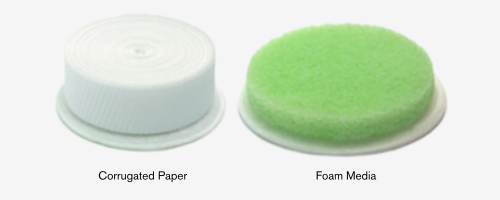
Humidification Effectiveness
The Intersurgical range of HMEs and HMEFs has been tested independently at TiM Germany(3) in accordance with the test methodology described in ISO 9360-1:2000(4). Visit our filtration and humidification page for further details.
Heat and Moisture Exchangers (HMEs)
Our range of HMEs for ventilation and spontaneously breathing patients improve the humidification of inspired gases. Also known as passive humidification, this requires an HME to be positioned within the breathing system close to the patient’s airway.
The HME is designed to replicate the functions of the upper airway, conserving the patient’s own expired heat and moisture and returning it to the patient on their next inspiration.
We offer a wide and comprehensive range of HMEs with a variety of efficiencies, sizes and shapes to ensure maximum customer choice whilst meeting all clinical requirements. Take a look at our range below, or click on the image to visit the relevant product page.
The common features of Intersurgical’s HMEs include:
• Designed for use within anaesthesia, intensive care and home care environments.
• Whilst providing some physical protection they do not provide bacterial or viral protection for the patient.
• The humidity output for all HMEs is tested and validated in accordance with ISO 9360-1:2000(4).
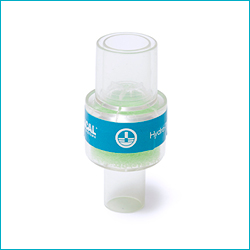
Hydro-Therm™ HME is a small volume, lightweight device clinically suitable over a wide range of patient sizes.
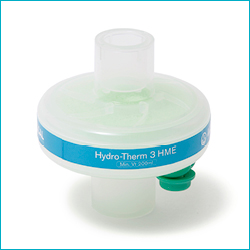
Hydro-Therm™ 3 HME is a larger volume HME with rounded housing for use in anaesthesia and intensive care.
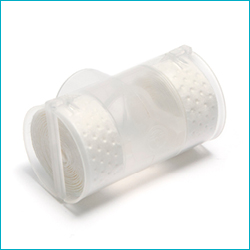
Inter-Therm T™ is a HME designed for use with spontaneously breathing patients in order to reduce loss of heat and moisture during respiration, ideal for patients and clinicians caring for patients living with a tracheostomy. Small and lightweight, it features a unique white corrugated paper HME design to provide the perfect combination between humidification output and low resistance to flow.
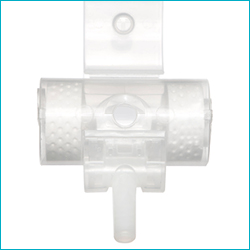
Inter-Therm™T + HME is designed for use with spontaneously breathing patients in order to reduce loss of heat and moisture during respiration, ideal for patients and clinicians caring for patients living with a tracheostomy. Small and lightweight, it features both a clipped suction port and swivel oxygen stem combined with a unique white corrugated paper HME design to provide the perfect combination between humidification output and low resistance to flow. The product is also available with supplemental oxygen tube.

Heat and Moisture Exchanging Filters (HMEFs)
The Intersurgical range of heat and moisture exchanging filters (HMEFs) combines the filtration efficiency of dedicated breathing filters with optimum moisture return provided by the addition of an HME element. Designed for use at the patient connection.
We offer a wide and comprehensive choice of HMEFs with a variety of efficiencies, sizes and shapes to ensure maximum customer choice whilst meeting all clinicial requirements.
The common features of Intersurgical’s HMEFs include:
• Range of filtration efficiency between 99.9% and 99.999%
• Independently validated against clinically relevant bacterial and viral challenges
• Optimum level of humidification of medical gases
• Independently tested to ISO9360(4)
• For use in breathing systems within intensive care and anaesthesia
• Maximum recommended use of 24 hours
The products included in this range are listed below and they are available to order with various accessories.
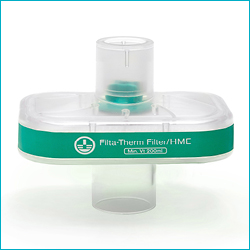
Filta-Therm™ HMEF range - high efficiency
The Filta-Therm™ is a high-efficiency HMEF offered with a variety of patient connections.
Filta-Therm™ Plus (1941001) provides the optimum solution for intensive care with improved HME performance and high filtration efficiency.
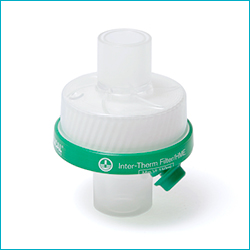
Inter-Therm™ HMEF range - sterile
The Inter-Therm™ range of sterile HMEFs is designed for use in breathing systems in the operating theatre and intensive care unit. The Inter-Therm™ includes corrugated paper HME media, providing excellent humidification and low resistance properties.
Inter-Therm™ Mini angled offers an easy to use option with an integral 90° elbow for paediatrics, reducing the need for an additional catheter mount or separate patient elbow.
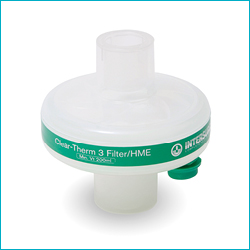
Clear-Therm™ HMEF range - medium efficiency
Clear-Therm™ 3 and Clear-Therm™ Angled HMEF is deisgned for use in anaesthesia and intensive care with the option of an integral 90° elbow, reducing the need for an additional catheter mount or separate patient elbow.
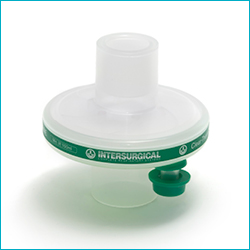
Clear-Therm™ Midi
A low volume option for minimising bulk and dead space in anaesthesia.
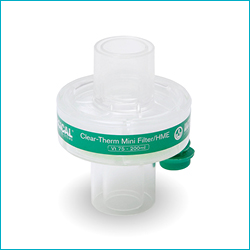
Clear-Therm™ Mini
Clear-Therm™ Mini is a low volume option for optimum care and protection of ventilated paediatric and neonatal patients
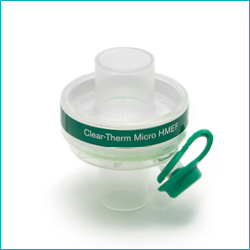
Clear-Therm™ Micro
Clear-Therm™ Micro is an ultra low volume option for optimum care and protection of ventilated paediatric and neonatal patients
Reference 3: Technologie Institut Medizin GmbH (TiM)
Reference 4: Anaesthetic and respiratory equipment, Heat and moisture exchangers (HMEs) for humidifying respired gases in humans. Part 1: HMEs for use with minimum tidal volumes for 250ml.


























